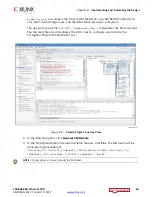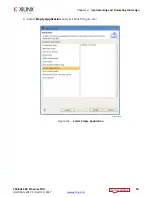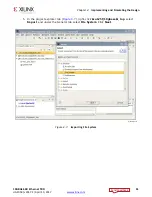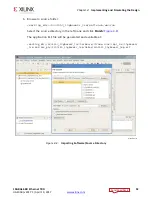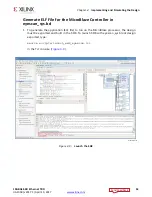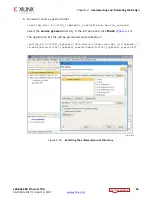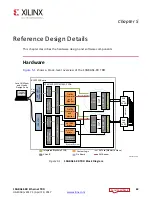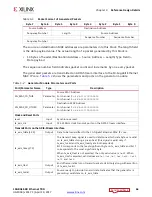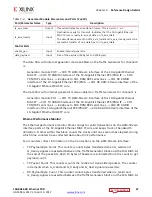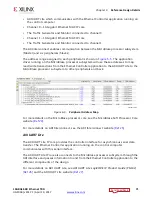
10GBASE-KR Ethernet TRD
60
UG1058 (v2017.1) April 19, 2017
Chapter 4:
Implementing and Simulating the Design
Simulating the Design
The 10GBASE-KR TRD can be simulated using the Vivado Design Suite simulator. The TRD
can also be simulated using Modelsim/Questa. Refer to
Vivado Design Suite User Guide:
Logic Simulation
(UG900)
, for information describing how to run simulations with
different simulators.
The simulation environment sets up the Traffic Generator and Monitor blocks of the TRD.
The Traffic Generator for channel 0 generates 10 packets which are transmitted to the
10-Gigabit Ethernet MAC IP core. The packets are looped back on the PHY and become
receive packets on channel 1. Similarly, the Traffic Generator for channel 1 generates 10
packets which are transmitted to the 10-Gigabit Ethernet MAC IP core. The packets are
looped back on the PHY and become receive packets on Channel 0. The test bench waits to
receive the 10 packets on each channel without errors and then ends the simulation with a
Simulation Passed
message. Simulating the AXI UART Lite IP and MicroBlaze processor
subsystem takes a lot of time. In order to speed up simulation the Traffic Generator and
Monitor block is not configured using its AXI4-Lite interface connected to the MicroBlaze
processor subsystem. The Traffic Generator and Monitor block provides a port tg_config to
configure the block. This port is used only for simulation.
this port.
The test bench for the 10GBASE-KR TRD is available at:
<working_dir>/kcu1250_10gbasekr_trd/hardware/sources/testbench/tb.v
.
IMPORTANT:
Before running a simulation, the kcu1250_10gbasekr_ref_design project must be open
and
Generate the Hardware Bitstream
must be executed.
Table 4-1:
Traffic Generator Configuration Port
Bit Position
Description
0
Enable loopback for external generator mode.
1
Enable generator for internal generator mode.
31:16
Ethernet frame data payload size.
Allowed values (46 bytes to 1,500 bytes).

